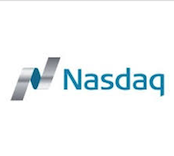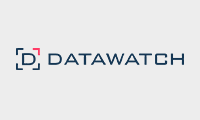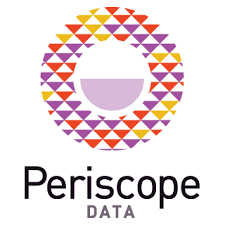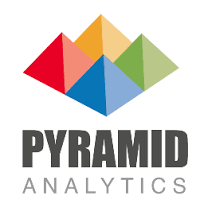Published
- 03:00 am

Nasdaq Inc. (Nasdaq:NDAQ) and the Bermuda Stock Exchange (BSX) have signed a new agreement with Nasdaq continuing to deliver its trading technology via the Nasdaq Financial Framework. The platform has been instrumental in solidifying Bermuda's status as a premier off-shore securities market for attracting international as well as domestic capital, and allowing for asset scalability and high-order capability.
"The core technology that underpins mission critical systems of an exchange speaks volumes to the seriousness and commitment of that exchange to the support and development of its domestic capital market and international clients that it serves," said Greg Wojciechowski, President and CEO of Bermuda Stock Exchange. "The Bermuda Stock Exchange is proud to have Nasdaq technology powering its mission critical systems."
"In collaborating with BSX over the past several years, Nasdaq has witnessed how well-functioning and high-performing the exchange has become," said Carlos Patino, Head of Latin America and Caribbean, Market Technology, Nasdaq. "We look forward to continuing to expand our relationship over the coming years, and delivering technology that will support the growth ambitions of BSX."
Nasdaq's market infrastructure technologies, including trading, real-time risk, index, clearing, CSD and market surveillance systems are operated in more than 100 marketplaces, regulators, clearinghouses and central securities depositories across the Americas, Europe, Asia, Australia, Africa, the Middle East and the Caribbean.
Related News
- 03:00 am

INDOS Financial Limited (“INDOS”), the leading UK independent depositary, has gone live with the second and key phase of the integration of its cloud-based DEPOcheck software.
DEPOcheck provides an integrated workflow management and fund oversight solution for depositary businesses. DEPOcheck was developed on behalf of INDOS by Centigen Soft.
Phase 1 of the project, completed in late 2016, provided a comprehensive work flow management system to record daily, weekly, monthly and quarterly depositary activity, mapped to the AIFMD depositary requirements, covering hedge funds, private equity and real estate funds.
Phase 2 launched today, involves the release of cash flow monitoring and asset record keeping and verification modules. This includes functionality to process large volumes of complex financial data from multiple industry sources (fund administrators, prime brokers and custodians) with different file formats, for example, to identify significant and unusual financial transactions, bringing such anomalies to the attention of the user for further investigation.
Phase 3 due to be completed in Q1 2018, will involve automation of certain fund net asset value oversight activity, and integrated artificial intelligence features for data analyses.
Bill Prew commented:
“We initially developed DEPOcheck to address shortcomings in our then existing third party workflow management system. We realised the potential of the system to do much more and set out to extend the system to replace another system we used to automate some of the depositary fund oversight activities our business performs.”
Bill continued “There are no other systems in the market that offer a similar integrated workflow management and automated monitoring solution for depositary businesses. We believe DEPOcheck will set a new industry standard.”
“DEPOcheck is a much faster and more flexible system than the previous third party systems we used and has already made a material difference to the efficiency of our operations. After one off investments in the development of the system, INDOS has already benefited from significant financial savings allowing us to focus our resources in other areas of business priority.”
Related News
- 06:00 am

Datawatch Corporation today announced the latest version of Datawatch Monarch Swarm, the industry's first team-driven, enterprise data preparation and socialization platform designed to speed collaboration and uphold governance practices. A centralized, cloud-ready solution, Monarch Swarm allows teams to create, find, access, validate and share governed, trustworthy data sets and models for true enterprise collaboration and faster, more strategic decision-making.
Monarch Swarm applies the fundamental concepts of self-service data preparation, collaboration and socialization while supporting governance and cataloging. The platform's key features include:
- Cloud-ready Data Preparation - Provides robust data preparation for the masses - anytime, anywhere - including automated and scheduled data extraction, cleansing, blending, transformation, enrichment and exports.
- Data Marketplace - Enables users to search and browse secure and governed cataloged data, metadata and data preparation models indexed by user, type, application and unique data values.
- Data Socialization - Promotes the socialization and reuse of models, curated data and analytics outcomes, and includes social features, such as user ratings, comments and popularity, to help users make better decisions about which data to leverage for analysis. Users can also like, follow and subscribe to colleagues to learn how they are using and rating data for preparation and analysis.
- Machine Learning - Facilitates data discovery with "smart recommendations." Machine learning technology identifies patterns of use and success, performs data quality scoring, suggests relevant sources, and automatically recommends likely data preparation actions based on user persona.
- Data Collaboration - Drives awareness of what data and assets are being created and by whom; enables creators to know how people are using their models; and allows administrators to see who is contributing and making an impact.
- Trusted Data - Identifies sanctioned, curated data sets, ensuring analysis is fueled with secure, governed, quality data, sourced by experts.
- Data Governance - Applies governance features, including data masking, data retention, data lineage and role-based permissions, to uphold corporate and regulatory compliance, and enhance trust in data, analytics processes and results.
- Gamification and Visibility - Includes ranking contributions, social scoring and gamification to drive participation and contribution.
"As a Monarch user, we're already benefitting from advanced self-service data preparation functionality, and our data analysis, reconciliation and reporting processes can now be done in the matter of minutes," said Tracy Hojka, manager of operations, Whitnell & Co. "Monarch Swarm will take our productivity to a whole new level by enabling employees to repeat, reuse and share data sets and models across teams, and better collaborate on data and analytics outcomes. This collective knowledge will lead to timely and more strategic business decisions."
Self-service Analytics Explosion Creates Market Opportunity for Monarch Swarm
With the self-service analytics explosion, businesses were supposed to become more agile, analytical and confident in their decisions. Instead, worker autonomy has caused the data landscape in many companies to become like the "Wild West." IT has lost control over data usage, analysts are working in silos, and there is a profound mistrust of data and analytics outcomes. Datawatch Monarch Swarm combines the ease-of-use and robust data preparation technology that the Monarch Complete self-service product is known for with added collaboration, socialization and governance features. With this new approach to business analytics, organizations can achieve the perfect balance between the agility and teamwork end users demand and the data control needs of IT.
"The explosive use of data across the business has elevated the importance of having it readily available for any operational or analytical needs. But, the seismic shift is not about one individual's needs; rather, it's about the requirements of the entire business," said Mark Smith, CEO and chief research officer at Ventana Research. "The need to collaborate and work together across the business - and securely with IT - has driven organizations to look for more than just self-service data preparation. They now seek technology that works across the entire enterprise. Datawatch Monarch Swarm is designed to meet this need. It provides reliable and adaptable data preparation that can be secured and governed, and, most importantly, it takes a productive and collaborative approach to utilize data anywhere at any time."
"Monarch Swarm brings analysts together to focus on the common purpose of accessing answers - answers based in the cross-business insights that profoundly impact operational processes and the bottom line," said Jon Pilkington, Datawatch's chief product officer. "It essentially redefines how businesses approach the analytics process - moving from self-service data preparation to team-based, enterprise data preparation. With Monarch Swarm, organizations can achieve enterprise-wide collaboration and a data-driven culture that results in high-performing teams that are capable of delivering business value that drives change."
Related News
- 02:00 am

AccessData Group, a leading provider of integrated digital forensics and e-discovery software, today announced the release of new versions of its suite of digital forensics software tools, with innovative new features that allow customers to take greater control of their digital investigations.
The new product releases extend the capabilities of AccessData software tools by enabling seamless integration with important third-party applications. Users can gain seamless access to nearly 200 additional mobile parsers through a technology partnership with Belkasoft Evidence Center. The result allows users to utilize the parsed data from popular mobile apps - such as SayIt, What'sApp and Facebook - to add more color and context to their investigations. In addition, new integration with Project VIC makes it easier for law enforcement professionals to investigate and prosecute child exploitation cases, as well as share forensic data. And iSubmit users will benefit from easier case management of digital evidence with a new AccessData integration.
"The enhancements built into AD Lab 6.3 and FTK 6.3 deliver powerful job management tools, the ability to parse additional file types and more flexible processing options that make our customers' digital investigations more efficient," said Victor Limongelli, chief executive officer of AccessData. "The new versions of these software products truly raise the bar on our customers' digital forensics investigations."
The new releases also include a powerful new feature that enables users to view all active jobs that are being processed by the software at any given moment, then easily change the job processing order to prioritize one specific matter over others. Moreover, the addition of customizable processing profiles within the AccessData forensics tools now make it easy for users to establish enterprise-wide processing standards, which can help create consistency for investigations and reduce the possibility of overlooked data.
AD Lab is a large-scale investigations and processing engine that enables computer forensics labs of all sizes to provide their teams with collaborative analysis, centralized case management and web-based review, thereby dramatically streamlining the investigative process. FTK(Forensic Toolkit®) is a court-cited digital investigations platform built to help customers find relevant evidence faster, dramatically increase analysis speed and reduce backlogs.
The software enhancements have also been built into the newly released 6.3 version of AD Enterprise, a platform for managing forensic investigations and incident response.
For more information about the new versions of AccessData's digital forensics software products, please click here.
Related News
- 01:00 am

Periscope Data today launched a new software platform that meets the unique needs of professional data teams, the fast-growing community of data analysts, data engineers, data scientists and chief data officers that are driving the future of business. Periscope's Unified Data Platform is the industry's first to address the complete analytics lifecycle, allowing data teams to ingest, store, analyze, visualize and report on data - all from one connected platform - and deliver deeper insight to their organizations.
Often called the next natural resource, corporate data is the lifeblood of most businesses and drives significant technology investment. Yet most organizations struggle to efficiently and accurately harness insights from this data. The reason: Data is fragmented across the business, managed by an array of disconnected tools, and analyzed by siloed teams that can't ensure accurate metrics or consistent insights into business performance.
With Periscope's Unified Data Platform, businesses can create a data-driven culture by combining a single source of truth - a data warehouse - with deep analytics capabilities, empowering data teams to collaborate and be more productive and efficient. Periscope's platform is designed to overcome the high costs of incomplete, out-of-date and potentially inaccurate data, which costs a typical business nearly $10 million per year1 - creating a $3.1 trillion annual drag on the U.S. economy2. The platform also addresses the large and growing market for big data and analytics software, predicted to be worth $60 billion globally by 2020, according to IDC3.
"Companies have more data than they can handle - but never enough insight," said Harry Glaser, co-founder and CEO of Periscope Data. "Business leaders know they're not getting what they need, and their data teams are hamstrung by siloed, inefficient systems. How often does a CEO get conflicting views of data from different departments? And how often do businesses make product decisions without fully understanding customer behavior? This has to change, and we're excited to empower data teams with a fast, smart, unified platform."
"Data is essential to Flexport's mission, which is to fix the user experience in global trade," said Ryan Peterson, founder and CEO, Flexport. "We use data internally to run a better operation, and also to add more value to our customers. If we didn't have Periscope Data at the core of our business, organizing all our data, making it accessible and helping our teams make decisions, we would really struggle and be back in the dark ages. We use it to do everything, and we're steering the business strategically based on the insights that we find in Periscope Data."
Founded by managers from Google and Microsoft, Periscope Data has already become a hit with its core product (Periscope Data Analytics), which instantly turns SQL queries into interactive charts and dashboards that are easy to share. Periscope's customers write 16 million queries and share 30,000 dashboards per day, spending an average of 20 hours every week in the software, and over 90% log in to the platform every day. Since 2016, the company has tripled its customer base to more than 950 brands, including Adobe, Crunchbase, EY, Flexport, MoneyLion, New Relic, Supercell, Tinder and ZipRecruiter.
Periscope's new Unified Data Platform extends the core product with built-in data warehousing capabilities based on Amazon Redshift, as well as new capabilities to ingest data from any source, all without leaving the Periscope platform. The Unified Data Platform is comprised of the following core components:
-- Ingestion: Connect to data from virtually any source, easily and instantly. Through partnerships with Alooma, Fivetran, Matillion, and Stitch Data, data teams can now use Periscope Data to ingest data from disparate data sources into Periscope's managed warehouse, creating a single source of truth for accurate analysis and reporting.
- ETL: Analysts are now able to transform data prior to loading a data warehouse, or after, allowing them to apply logic to data where it makes sense.
- Analysts can also use the platform to define and reuse SQL-based data models that update automatically and are tailored to their objectives.
-- Storage: 100% data warehouse, 0% IT hassle. Periscope Data's platform embeds and extends Amazon Redshift to deliver best-in-class data storage and management via the cloud. For the first time, analysts have full visibility into data dependency and data latency to ensure they're using the correct data sources. With Periscope, data analysts can spin up a powerful data warehouse - including full control over user access, data permission, cluster performance and query management - with no IT help required.
- Data teams can connect data sources that Periscope will keep fresh and up-to-date automatically - or data teams can write in their own data via JDBC.
- Periscope also allows data teams to build materialized views on top of the full, raw data set using SQL, and keeps them up-to-date automatically without requiring the customer to do any engineering. This radically reduces the time and effort to get to CEO-ready insight and charts.
- Customers don't need to purchase and maintain infrastructure, or worry about redundant manual work to schedule, backup, restore and/or archive data.
- Data is always up-to-date and in one place, freeing data engineers from spending countless hours copying data from system to system, allowing them to focus on system performance and optimization.
-- Analysis: Surface actionable insights in seconds - not hours or days - and go deep on business insights. Periscope currently delivers fast and powerful queries using the SQL database language, and will add support in early 2018 for R and Python, the most popular statistical programming languages.
- Periscope's SQL Editor helps analysts get their jobs done quickly with fewer manual steps and repetitive queries. "Snippets" allow analysts to store frequently used code to a common library, and "views" allow them to reuse entire queries. The system also provides query revision history, autocomplete, formatting and universal syntax.
- Periscope delivers fast queries across the board by pre-processing data in materialized views, so analysts can go from data to insights in seconds. The system proactively notifies the analyst if a view requires their attention.
- R and Python support will empower data scientists to work within the same platform as data analysts and data engineers, providing common management, common compliance, and a common toolset against a unified dataset.
-- Visualization: From data to charts instantly. Superior design promotes greater usability so Periscope curates the types of charts, options, and color schemes available to create a friction-free environment. Analysts can build interactive and dynamic charts and dashboards with just a few clicks, capturing accurate and actionable insights for business users without compromising flexibility or control.
- From bar charts to maps, Periscope offers hundreds of visualization options ensuring that analysts can answer any question with just the right visualization.
- Visualization is highly efficient, including automatic defaults to reduce the need for configuration.
- The best-in-class IDE includes positional error highlighting, automatic code formatting, autocomplete, partial query runs and many more features so that analysts can do all their work in one platform without switching to a separate code editor.
- Data consumers can drill down, pivot, filter and aggregate to answer questions themselves without writing SQL or chasing down busy analysts.
-- Reporting: Embed insights and drive action. Periscope enables analysts to deliver actionable and accurate insights to business stakeholders when, where and how they want it. Persistent connectivity, coupled with automated queries, ensures that charts are always accurate and up-to-date, and detailed annotations allow users to collaborate and gain immediate insight.
- Charts can be embedded within a web page, intranet portal or directly within a product via Periscope's embed API, which allows analysts to easily and securely share dashboards with anyone in the world.
- Charts and dashboards can also be shared via links, email, Slack, PDF or CSV files, and even full-screen TV mode.
"Most companies have data scattered all over, with disparate teams and too many tools," said Tom O'Neill, co-founder and chief technology officer, Periscope Data. "We've re-engineered the process to regain control over runaway data, empowering individual data experts to do their jobs faster - and allowing data teams to collaborate across the analytics lifecycle. Unifying data and unifying data teams will be critical to the future of data-driven businesses."
"As a business manager, I need to have fresh and accurate data to make the best decisions," said Alexandra Mack, head of marketing for Crunchbase. "We chose Periscope Data because it unites all of our disparate data sources, aligns our data teams, and gives my staff the power to be data experts far better than any other solution we evaluated. We're banking on Periscope for our strategic planning - in fact, our 2018 plan wouldn't make sense if we took Periscope Data out of the picture."
Availability
Periscope's Unified Data Platform is available today, including both Periscope Data Analytics and Periscope Data Warehouse. Support for R and Python languages will be available in early 2018.
As an enterprise-grade system, Periscope's Unified Data Platform delivers the highest levels of management and security functionality. Using the platform, data teams can monitor their cluster's CPU and memory usage, which queries are being run by whom, as well as control who has access to which data. Additionally, Periscope Data delivers a cloud security infrastructure that follows industry best practices and standards, including:
- End-to-end encryption for data at rest and in transit using AES-256
- TLS 1.2 support
- Monitoring, access logs and intrusion detection systems
- Support for single sign-on and two-factor authentication
- SOC2 and HIPAA compliance
Related News

Ivy Schmerken
Editorial Director at FlexTrade
As MiFID II’s Jan. see more
- 04:00 am

AsiaKredit, a digital consumer lender focused on Southeast Asia, today announced the launch of pera247 in the Philippines, an innovative, data-driven consumer lending platform delivered through a mobile application.
Designed to provide the shortest real-time credit decision by any platform on the market, the pera247 platform uses big data to optimize the credit assessment process to make fast and reliable credit decisions. As part of its credit assessment process, pera247 will extract a selection of data points from both traditional and alternative sources of data, such as behavioral mobile data from an applicant’s smartphone. Using the AsiaKredit team’s proprietary digital technology and technical know-how, pera247 is able to incorporate highly predictive digital credit assessment into its underwriting algorithm to improve both the availability of credit to those with limited or no banking history as well as increase their approval rate, whilst reducing its cost of risk.
At the end of the credit decision journey, the pera247 app also acts as a mobile wallet for the successful applicant, where funds will be disbursed to and linked to thousands of physical payment centers, within hours of the application.
AsiaKredit has raised USD675,000 to date from combined Pre-Series A and seed funding to date, part of which will be utilized as its funding facility for its customer loans. After its initial launch, it will seek to bring on board additional capital to expand its loan capital and operational balance sheets.
The fully digital consumer lender is venture-built and funded by Singapore-based investors FORUM, the largest fintech venture builder in Emerging Asia led by serial entrepreneur Mr Greg Krasnov, and Fintonia Group, the leading early stage fintech investor in Southeast Asia, led by Mr Adrian Chng, the former CEO of JobsDB. Mr Chng leads the Company’s board as its Non-Executive Chairman.
Founded in 2017, AsiaKredit is led by its Co-Founder and Chief Executive Officer, Mr Mike Singh, a seasoned banker and serial entrepreneur with over 20 years of experience. Mike’s financial sector expertise was honed through senior management roles in consumer and retail banking with top banks such as HSBC North America and RCBC Philippines. Among Mike’s prior entrepreneurial ventures are Emyth Inc., a leading retailer and manufacturer in the Philippines with over 100 outlets, and an auction web portal sold to one of the Philippines largest media conglomerates.
AsiaKredit’s Co-Founder and Chief Executive Officer, Mr Mike Singh, commented: “We are excited to take consumer lending fully digital in the Philippines as we see a dynamic shift in consumer digital behavior to access financial services through mobile and online channels. Through pera247, AsiaKredit has a huge opportunity to impact the lives of hundreds of millions unbanked clients in Southeast Asia, leveraging the high mobile penetration in the region to foster financial inclusion. We have a diverse, international, experienced, and proven management team, and top-notch backers with solid track records in fintech and consumer finance. We look forward to establish ourselves as a strong player in the digital lending space across the exciting emerging markets of Asia.”
AsiaKredit’s team in Manila includes digital marketing and operations experts with world-class experience from the likes of Lazada, Hinduja Global Solutions, and Thompson Reuters. Similar to other FORUM- and Fintonia Group-backed ventures, AsiaKredit’s team leverages its prowess in data analytics, credit-scoring algorithms, and integrated technology solutions from Eastern Europe, where digital finance has reached a level of sophistication. Beginning with the Philippines, AsiaKredit plans to expand its product offering to other countries across Southeast Asia, with plans to expand into Indonesia in 2018.
Related News
- 03:00 am

Four out of five companies globally (81 percent) have made investments in "digitalization"––investing in digital technologies to change business models and drive revenue—in the past three years, yet only one out of four (23 percent) have achieved topline growth as a result.
In other words, the digitalization efforts of three out of four companies have failed, according to the latest survey released today by Simon-Kucher & Partners, the world’s leading pricing strategy consultancy.
"Companies whose digitalization initiatives didn't make an impact on their top lines often failed to recognize the value of technology or didn't properly integrate a dedicated digital lead into their existing organizational structure," said Mark Billige, the UK Managing Partner at Simon-Kucher & Partners. "They also tended to invest in the wrong digital initiatives."
"Many companies are investing heavily in digital transformation programmes, but their efforts ultimately didn’t bring in more revenue. Often this was because they failed to recognise the full extent of benefits that the technology brought to their customers and so priced their offering too cheaply. Many didn’t create a dedicated digital lead to champion the initiative and help navigate it through the complex organizational structures and resulting internal politics,” said Mark Billige, the UK Managing Partner at Simon-Kucher & Partners. "They also tended to invest in the wrong digital initiatives."
The Global Pricing and Sales Study (GPSS) is undertaken biannually, and this year involved surveys of 1,925 companies across major industries in over 40 countries. It captured a comprehensive picture of their pricing and digitalization strategies, as well as their overall business environments.
Dr. Peter Colman, Partner at Simon-Kucher & Partners added: "Based on our findings, we believe CEOs and C-suite decision-makers should focus on opportunities to monetize their digital products and optimize prices using big data. These were the two digitalization objectives that we found produced topline growth most frequently—but were also among the least popular. Currently there is too much emphasis on efficiency and cost cutting rather than on growing revenues.”
The study is available for complimentary download here.
The GPSS also found that:
- Companies who succeeded at digitalization were twice as likely to start costly price wars - Digitalized companies that reported increases in topline growth from digitalization were twice as likely as others to initiate price wars.
Billige noted that "in most price wars, there is only one winner: the customer. So it is important to have a well-thought-out digital strategy to not let digitalization become a curse."
- Pricing pressure will continue to increase – The top three drivers of increased pricing pressure identified by the GPSS—low-price competition, increased customer negotiating power, and increasing price transparency—can all be linked to digitalization. This means that digitalization can be a growth risk and may lead to price pressure.
- Even industries with above-average digitalization investment such as those in retail are missing the mark – "Digitalization investments have been led by several pure online players," said James Brown, Partner at Simon-Kucher & Partners. "This has forced traditional brick and mortar players to rethink their strategy as they struggle to maintain consumer loyalty in a world where shoppers are exposed to more choices and greater price transparency than ever before."
- Only 18 percent of companies were "digitalization heroes" who transformed their business models with digital technologies the right way – Companies who invested in digitalization and successfully drove topline impact were identified as "digitalization heroes." These companies employed 3.75 times more people in full-time pricing-related roles, had 28 percent higher pricing power, and outpaced the market by 37 percent in EBITDA margin.
However, only 18 percent of companies fit this category, showing that a wide majority of businesses could benefit from following the practices set by these exemplary companies. "These digitalization heroes can be considered best-in-class," said James Brown. "They act as role models for the entire market."
Related News
- 04:00 am

Grab, Southeast Asia’s leading on-demand transportation and mobile payments platform, today revealed its in-store and in-restaurant payments feature.
GrabPay will focus on Singapore’s more than 20,000 local, cash-based merchants who will see the most immediate benefits from adopting cashless. Grab’s first 25 restaurants and hawker stalls in the Central Business District and Bishan area were signed up running up to the official launch of its service. Now, Grab’s dedicated internal and channel partner sales teams will on-board hundreds of hawkers and small businesses in the coming weeks. The GrabPay service for restaurants and shops will progressively roll out in local neighbourhoods, such as Telok Ayer, Tanjong Pagar, and Tiong Bahru and on-board 1,000 merchants in Singapore by end of year. Beyond Singapore, Grab confirms it will launch the GrabPay wallet across Southeast Asia in 2018.
“Amid Singapore’s push towards a Smart Nation, we are enabling Grab users to pay for services outside of transportation. We’re focused on helping cash businesses go cashless, giving them access to new customers in an affordable way. Enabling Grab payments in restaurants and shops is a significant step towards becoming the largest consumer internet platform in Southeast Asia,” said Tan Hooi Ling, Co-Founder of Grab.
Jason Thompson, Managing Director for GrabPay Southeast Asia, adds “Grab is uniquely positioned to build the #1 payments platform in Southeast Asia. With our large base of users already conveniently paying for rides, a rewards programme that keeps more people on the platform, and merchants who are coming on board, we will begin to see GrabPay available everywhere to everyone.”
The GrabPay platform is also designed to be scalable and flexible to work with other QR-code-based mobile payments systems in Singapore, thus facilitating a collective effort to move Singapore towards a cashless society.
Related News
- 08:00 am

Pyramid Analytics, a leading global provider of enterprise analytics software, introduces Pyramid 2018: the Analytics OS. As a server-based, multi-user Analytics OS, Pyramid 2018 allows data leaders to create a universal analytics environment that fulfils the promise of a true, enterprise-wide data strategy. It supports the entire self-service analytics workflow so more users can use data to make better decisions.
Omri Kohl, co-founder and CEO of Pyramid Analytics: “We're extremely proud of Pyramid 2018. Not only does the Analytics OS set a new standard for self-service analytics, with our product, data leaders can now unify their data silos, leverage existing investments, and realise their analytics strategies. In addition, users can integrate machine learning algorithms into their everyday operations so the organization can broadly benefit from advanced data science techniques.”
With Pyramid 2018 organizations can implement an analytics solution that brings their existing data strategies into focus, all while avoiding risky rip-and-replace approaches characteristic of many BI implementations. Pyramid 2018 has a platform-agnostic and scalable architecture that helps data leaders manage their data strategies across any environment (on-premises, in the cloud, or across hybrid deployments), regardless of technology (Oracle, SAP, Microsoft, Big Data, etc.).
With Pyramid 2018, business users can easily prepare, model, visualize, analyze, publish, and present data from their browser or mobile device. It enables end users to conduct high-end analytics and data science without IT help in a governed environment, without sacrificing centralized control or security.
Pyramid 2018 offers multiple AI engines and language support (R, Python, TensorFlow, Weka, MLIB, SAS runtime and others), which enables organizations to integrate machine learning algorithms into their data activities. Users can write and share their own calculations and algorithms, or use existing algorithms from an online marketplace available within the product.
“The ability to bring together multiple data sources and to transform data using intuitive modeling tools will enable us to fundamentally change the way that we transform data into actionable information,” said Chris Gill, CITO of Drake University. “We will be able to take data that is now in multiple silos and bring it together quickly and easily to make more effective decisions.”
Pyramid 2018 is available directly through the Pyramid Analytics website and a worldwide network of partners and OEMs. Pyramid 2018 comes with a three-tier subscription to support any organization’s implementation configuration.









